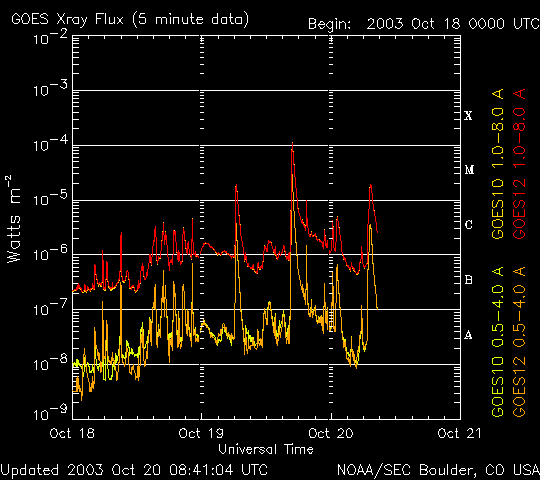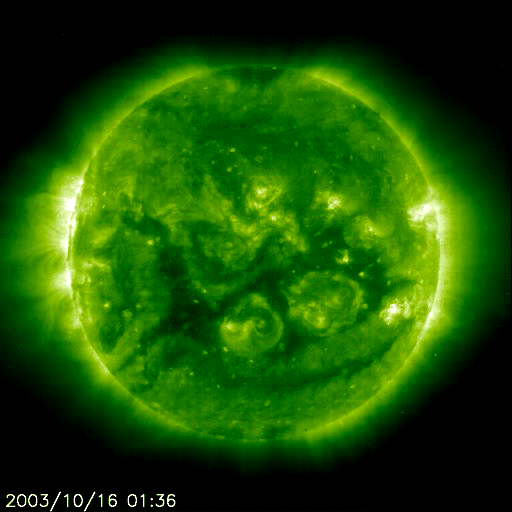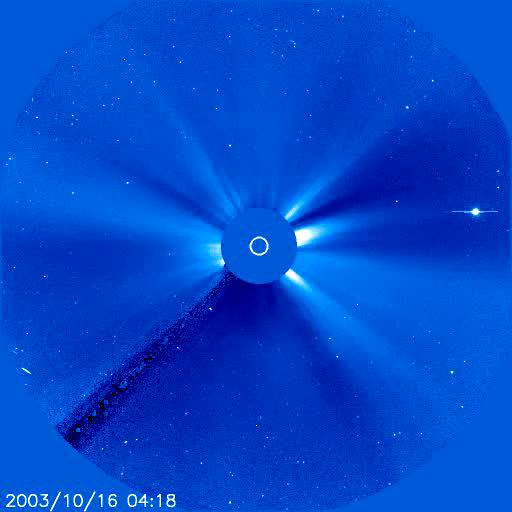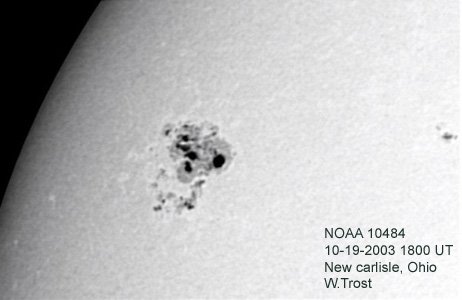The SIDC has sent an alert message on October 19 at 18:07 UTC:
An X1.2 flare took place a few minutes ago (Start: 16:27 , Peak: 16:50 , End: 17:20UTC) in active region Catania 065 - NOAA 10484 (position N06E61). This event will affect radio propagation and may be followed by other M-class flares, and maybe another X-class flare in the next few hours and days.

Scientists classify solar flares according to their x-ray brightness in the wavelength range 1 to 8 Angstroms. We have the A, B, C, M and X level. X-class flares are big; they are major events that can trigger planet-wide radio blackouts and long-lasting radiation storms. These measurements are made by GOES, a geostationary satellite.

Sunspot group 065, labelled by NOAA as active region 10484, released unexpectedly an X1 flare on Sunday, October 19 at 16:50 UT. On GOES-data an enhanced flaring activity preceding the X-flare, was seen. This happened after one week of total flaring silence.

On the SOHO/LASCO movie an associated CME was visible, but did not appear Earth directed. The sunspot group has grown very fast: it doubled in area overnight and has now a beta-gamma-delta configuration. The beta-gamma labeling indicates a sunspot group that is bipolar but in which no continuous line can be drawn separating spots of opposite magnetic polarities, while delta denotes a complex magnetic configuration as opposite polarity sunspots share a penumbra.






